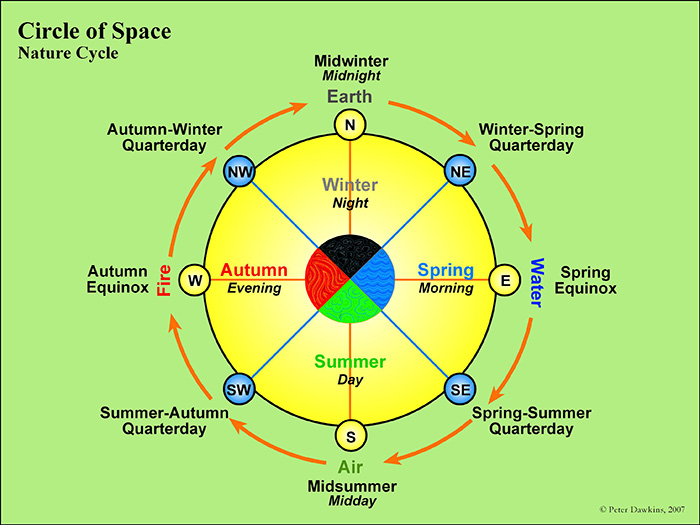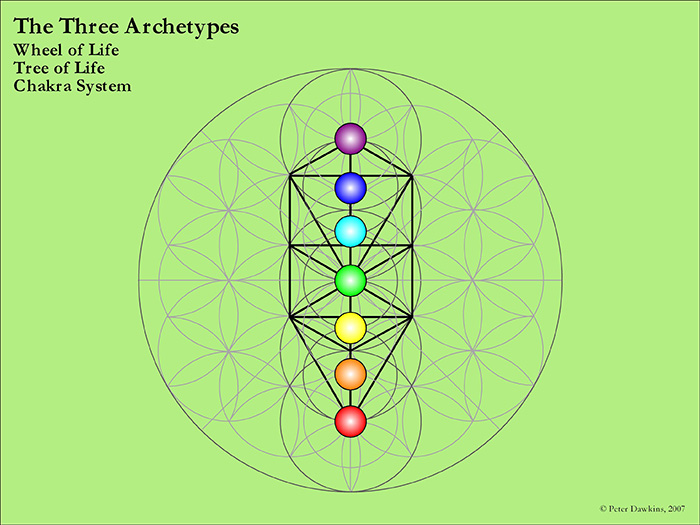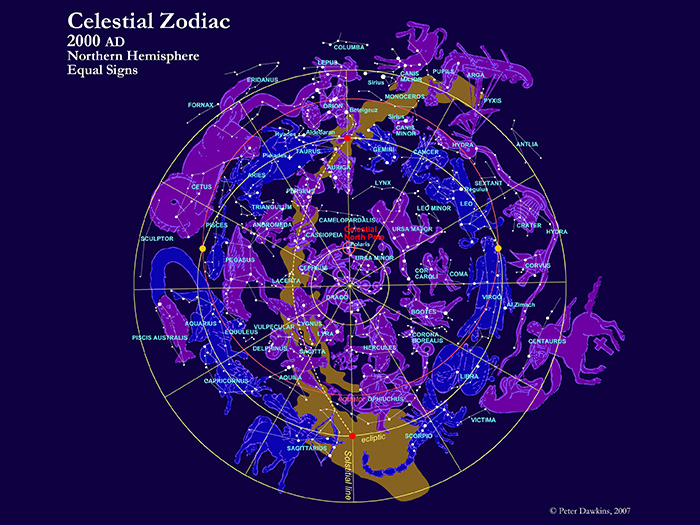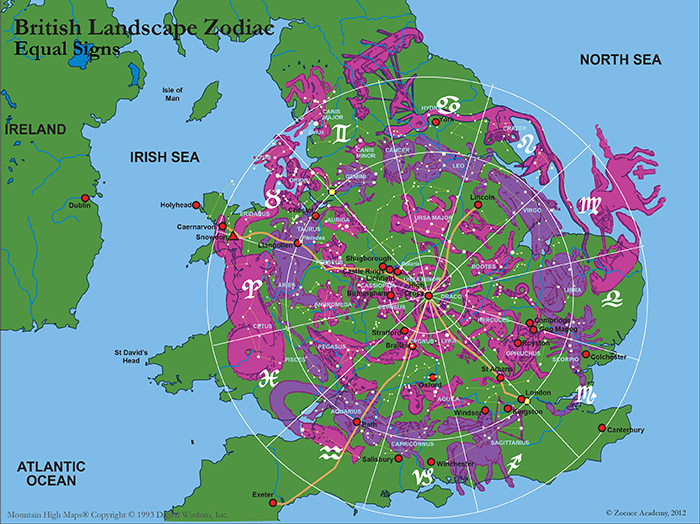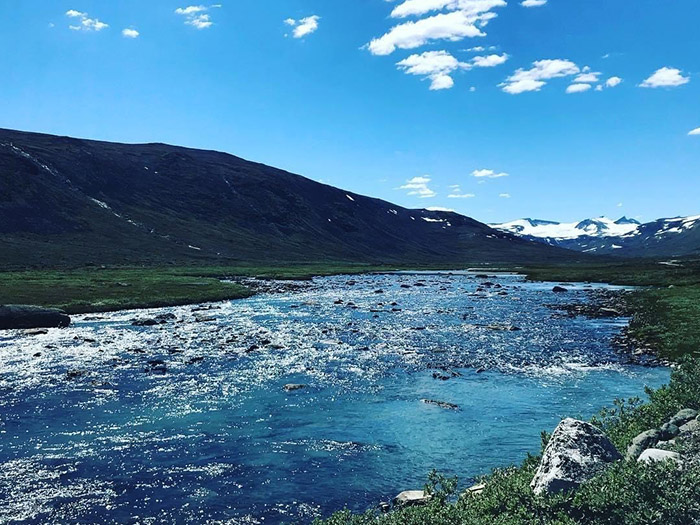Solar Festivals
Within each cycle of time there are four main divisions or quarters, and eight major power-points or time-chakras. The power-points occur at the cusps and mid-points of the quarters, and are the manifestation in time of the eight spokes of the archetypal Wheel of Life. In the annual cycle of time the quarters are referred to as seasons, and the power-points are known as the eight great solar or fire festivals. The four power-points that mark the mid-points of the seasons are called the solstices and equinoxes.
The solstices occur when one of the Earth's poles reaches its maximum tilt towards the Sun, and the other pole reaches its maximum tilt away from the Sun.* In the northern hemisphere, the midsummer solstice (June 20-22) is the middle of the summer season, when the planetary north pole is at its maximum tilt towards the Sun, whilst the midwinter solstice (December 21-22) is the middle of the winter season, when the planetary north pole is at its maximum tilt away from the Sun. In the southern hemisphere, the dates are the other way around. For the purposes of the Zoence website and information papers, the dates and descriptions will deal with the northern hemisphere of the world.
The equinoxes occur when the Sun is directly above the equator and, throughout the whole world, rises due east and sets due west on a level horizon, and the night-time and day-time are equal (i.e. 12 hours each). The spring or vernal equinox (March 19-21) is the middle of the spring season, and the autumnal equinox (September 21-23) is the middle of the autumn season.
The four power-points that divide the year into its four quarters, marking the cusps of the seasons, when one season turns into the next season, are the quarterdays, as originally recognised and known. A strict mathematical division of a 365-day year would place the quarterday power-points on 5 February, 8 May, 6 August, and 5 November. However, as the annual circuit of the Earth around the Sun is not exact in its number of days, but is approximately 365.25 days (i.e. approximately 365 days and 6 hours), which necessitates adding an extra day to the year every four years, the timing of the quarterdays is somewhat fluid. The quarterdays were known to the Celts as Imbolc, Beltaine, Lughnasadh, and Samhain, each of which was celebrated as a 3-day festival. They are known today as Candlemas (2 February), May Day (1 May), Lammas (1 August), and All Hallows (1 November), with only All Hallows still being recognised and celebrated as a 3-day festival—All Hallows Eve (Halloween), All Hallows Day, and All Saints Day.
From the Middle Ages onwards, the term "quarter day" was appropriated for civil reasons and moved to coincide (almost) with the solstices and equinoxes, with the seasons (the quarters of the year) being redefined as beginning and ending on those dates. These new quarterdays were used as the days for settling debts payable in quarterly instalments, such as farm rents and leasehold payments. As a consequence, the original quarterdays were renamed as cross-quarter days, with their real significance lost, and the timing of the seasons was put completely out of sync with nature, common sense and traditional knowledge. These 'modern' seasons are nowadays referred to as astronomical seasons, but with no regard to the fact that old names and dates are still used for the midsummer solstice (20-22 June) and Midsummer's Day (24 June), the lightest days of the year, and the midwinter solstice (21-22 December) and Christmas, the darkest days of the year.
The original quarterdays, being on the cusps of the true seasons, are fluid and feminine in nature, as one season flows into the next. By contrast, the solstices and equinoxes, which occur when the seasonal energy is at its most intense, are fixed and masculine in nature. These are represented geometrically and symbolically by the two Cosmic Crosses, the Crux Quadrata (Solar Cross) and the Crux Decussata (Saltire), referred to in Christian tradition as the St George Cross and St Andrew Cross. The former is equated with the colour red, the metal gold, the element fire, and the Sun; the latter with the colour white, the metal silver, the element water, and the Moon.
By celebrating these great solar festivals in sequence throughout the year we align ourselves with the alternating current of the cosmos—the masculine-feminine, yang-yin wave effect of the universal life force—and thereby are not only stimulated by it but also help to maintain the right balance and harmony of the polarities of life as they manifest in the world. If we do this well, we can marry the 'fire' and 'water' to form fire-water, the alchemical ether or quintessence, which is light. This light is also known as happiness, or joy.
The solar festivals are like the drumbeats of Shiva's heart—the heart of the world in its relationship with the Sun. To celebrate the solar festivals is the equivalent of beating in time with Shiva's drum, with the heart beats of the planet, to help make the heart of the world stronger, healthier, and capable of expressing more love.
An analogy can also be made with surfing, wherein the solar festivals are the mega-waves that all good surfers seek to ride. The festivals occur at approximately six to seven-week intervals, whilst the mega-waves are traditionally said to be every seventh wave.
The solar festivals can also be understood as chakras in time—the seven major chakras of an annual time cycle that issue from the alta-major chakra, known as the "eighth chakra" or "Pan chakra" (Pan means 'Universal', the 'All').
* The maximum tilt of the Earth's poles, either towards or away from the Sun, is 23.44°.
© Peter Dawkins
- Zodiac of Ages
- The Great Ages
- The Phoenix Cycle
- The Solar Breath
- The Grail Cycle
- The Great Festivals
- Solar Festivals
- Winter Solstice
- Winter-Spring Quarterday – Imbolc
- Spring Equinox
- Spring-Summer Quarterday – Beltaine
- Summer Solstice
- Summer-Autumn Quarterday – Lammas
- Autumn Equinox
- Autumn-Winter Quarterday – Samhain
- Lunar Festivals

